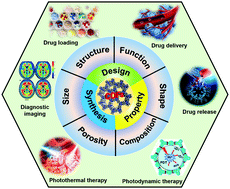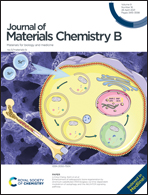Strategies and applications of covalent organic frameworks as promising nanoplatforms in cancer therapy
Abstract
Cancer nanomedicine is the best option to face the limits of conventional chemotherapy and phototherapy methods, and thus the intensive quest for new nanomaterials to improve therapeutic efficacy and safety is still underway. Owing to their low density, well-defined structures, large surface area, finely tunable pore size, and metal ion free features, covalent organic frameworks (COFs) have been extensively studied in many research fields. The recent great interest in nanoscale COFs to improve the properties of bulk COFs has led to broadening of their applicability in the biomedical field, such as nanocarriers with an outstanding loading capacity and efficient delivery of therapeutic agents, smart theranostic nanoplatforms with excellent stability, high ROS generation, light-to-heat conversion capabilities, and different response and diagnostic characteristics. The COFs and related nanoplatforms with a wide variety of designability and functionalization have opened up a new avenue for exciting opportunities in cancer therapy. Herein we review the state-of-the-art technical and scientific developments in this emerging field, focusing on the overall progress addressed so far in building versatile COF-based nanoplatforms to enhance chemotherapy, photodynamic/photothermal therapy, and combination. Future perspectives for achieving the synergistic effect of cancer elimination and clinical translation are further discussed to motivate future contributions and explore new possibilities.



 Please wait while we load your content...
Please wait while we load your content...